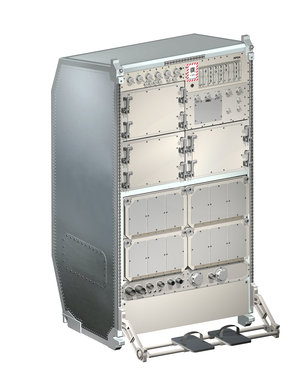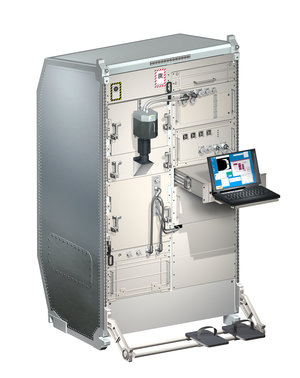European Technology Exposure Facility (EuTEF)
The European Technology Exposure Facility (EuTEF) was mounted outside the Columbus module. It carried experiments requiring exposure to the space environment and was returned to Earth in September 2009 aboard Space Shuttle Discovery on mission STS-128.
EuTEF is a programmable, fully automated, multi-user facility with modular and flexible accommodation for a variety of technology payloads.
EuTEF is specifically designed to facilitate the rapid turnaround of experiments and for its first configuration on orbit will accommodate nine different instruments.
The experiments and facility infrastructure are accommodated on the Columbus External Payload Adaptor, consisting of an adapter plate, the Active Flight Releasable Attachment Mechanism and the connectors and harness. The experiments are mounted either directly on the Adapter plate or a support structure that elevates them for optimum exposure to the direction of flight or pointing away from the Earth.
In total, the payload mass is under 350 kg, and requires less than 450 W of power.
The suite of experiments consists of:
MEDET, the Material Exposure and Degradation Experiment (CNES, ONERA, University of Southampton, ESA)
DOSTEL, radiation measurements (DLR Institute of Flight Medicine)
TRIBOLAB, a testbed for the tribology properties of materials in space (INTA, INASMET)
EXPOSE, photobiology and exobiology (Kayser-Threde, under ESA contract)
DEBIE-2, a micrometeoroid and orbital debris detector (Patria Finavitec, under ESA contract). Shares a standard berth with FIPEX. DEBIE-1 flew on the Proba satellite
FIPEX, an atomic oxygen detector (University of Dresden). Shares a standard berth with DEBIE-2
PLEGPAY, plasma electron gun payload for plasma discharge in orbit (Thales Alenia Space, under ASI contract)
EuTEMP, an experiment candidate to measure EuTEF's thermal environment during unpowered transport from the Shuttle to the Columbus External Payload Facility. (EFACEC, under ESA contract)
- EVC: an Earth Viewing Camera, developed by ESA/Carlo Gavazzi Space for outreach activities











